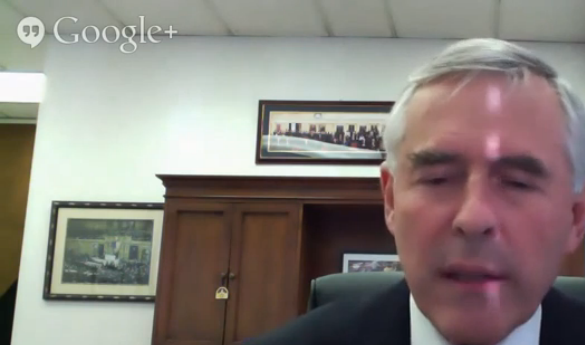Editor's Blog: Virginia officials to study "Pay It Forward, "Pay It Back" program
In an online forum with Virginia21, a non-profit lobbying group that focuses on higher education issues, State Senator John Edwards spoke about a new tuition model that may alleviate some of the burden of college tuition.
“An idea has come about that we students could go to college then pay later,” Edwards told Virginia21. “Where you pay for [college] based on a percentage of your income after you graduate for so many years. It’s a program that other states I understand are starting to do. It seems like a good idea.”
That program is most frequently referred to as “Pay It Forward, Pay It Back,” and has been gaining traction in a number of states. Media coverage covered this idea extensively when Oregon passed a pilot program last year. But the idea of postponing payments for tuition until after graduation was actually first put forward by the Economic Opportunity Institute.
“With Pay It Forward, students pay no upfront tuition or fees to attend college,” read a policy paper released by the institute in 2013. “Instead, they contribute a small percentage of their adjusted gross income after college - for example, 0.75% per year of community college, or 1% per year of university, for 20 years. Contributions go to a public higher education trust fund that gives each new cohort the same opportunity to attend college.”
Dylan Matthews, a Wonkblog writer at the Washington Post, gave a great overview of this idea after Oregon legislators decided to test it. As Matthews writes, there are a number of problems with tying a college education to a fraction of a student’s future income.
First, this program requires a large initial investment. Oregon officials determined that moving to this tuition model would require a $9 billion initial investment that wouldn’t be self-financing for 25 years.
Additionally, students entering the workforce have vastly different incomes and would be paying different costs for their degree. The engineering student who is making $80,000 out of college will be paying much more than the humanities student who makes $45,000. With such big cost differences, there is concern that the highest earning students wouldn’t buy into the program and run it into bankruptcy.
Matthews writes that one alternative to this problem would to predict how much a student would make in the future, and adjust the percentage accordingly. Of course – how do you predict a student’s future income based solely on their major?
Another problem is that in Virginia, there are over a dozen four-year public universities that operate on vastly different budget models to determine their costs. Some universities provide a lot of financial aid through endowments and others are making expensive investments in research facilities.
Finally, while the “Pay It Forward, Pat It Back” may provide a less immediate cost to students, it doesn’t do anything to actually address the growing costs of a college degree. Of course, state officials might end up implementing an altered version of this program to better fit its diverse system.

